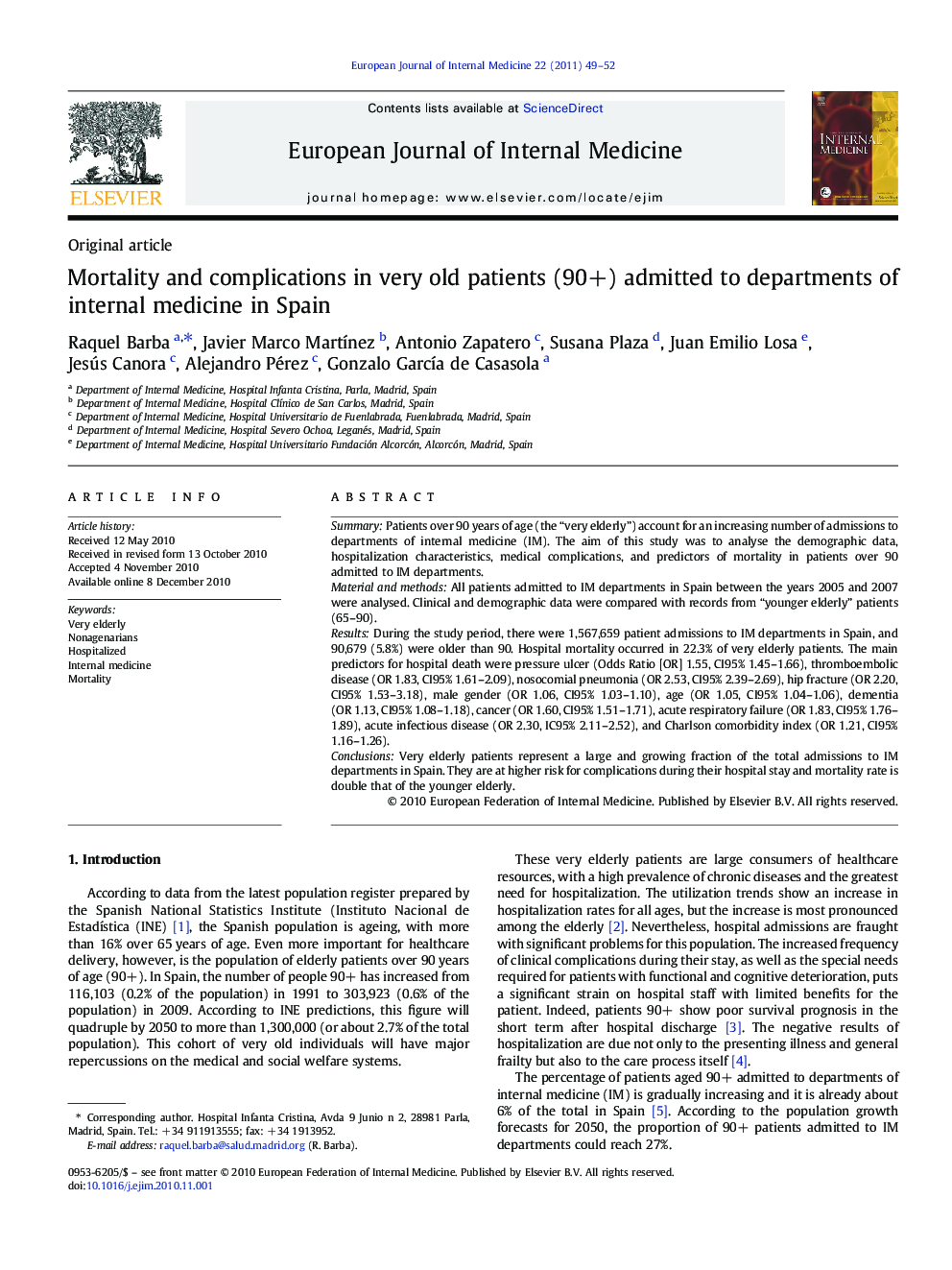| Article ID | Journal | Published Year | Pages | File Type |
|---|---|---|---|---|
| 3466485 | European Journal of Internal Medicine | 2011 | 4 Pages |
SummaryPatients over 90 years of age (the “very elderly”) account for an increasing number of admissions to departments of internal medicine (IM). The aim of this study was to analyse the demographic data, hospitalization characteristics, medical complications, and predictors of mortality in patients over 90 admitted to IM departments.Material and methodsAll patients admitted to IM departments in Spain between the years 2005 and 2007 were analysed. Clinical and demographic data were compared with records from “younger elderly” patients (65–90).ResultsDuring the study period, there were 1,567,659 patient admissions to IM departments in Spain, and 90,679 (5.8%) were older than 90. Hospital mortality occurred in 22.3% of very elderly patients. The main predictors for hospital death were pressure ulcer (Odds Ratio [OR] 1.55, CI95% 1.45–1.66), thromboembolic disease (OR 1.83, CI95% 1.61–2.09), nosocomial pneumonia (OR 2.53, CI95% 2.39–2.69), hip fracture (OR 2.20, CI95% 1.53–3.18), male gender (OR 1.06, CI95% 1.03–1.10), age (OR 1.05, CI95% 1.04–1.06), dementia (OR 1.13, CI95% 1.08–1.18), cancer (OR 1.60, CI95% 1.51–1.71), acute respiratory failure (OR 1.83, CI95% 1.76–1.89), acute infectious disease (OR 2.30, IC95% 2.11–2.52), and Charlson comorbidity index (OR 1.21, CI95% 1.16–1.26).ConclusionsVery elderly patients represent a large and growing fraction of the total admissions to IM departments in Spain. They are at higher risk for complications during their hospital stay and mortality rate is double that of the younger elderly.
